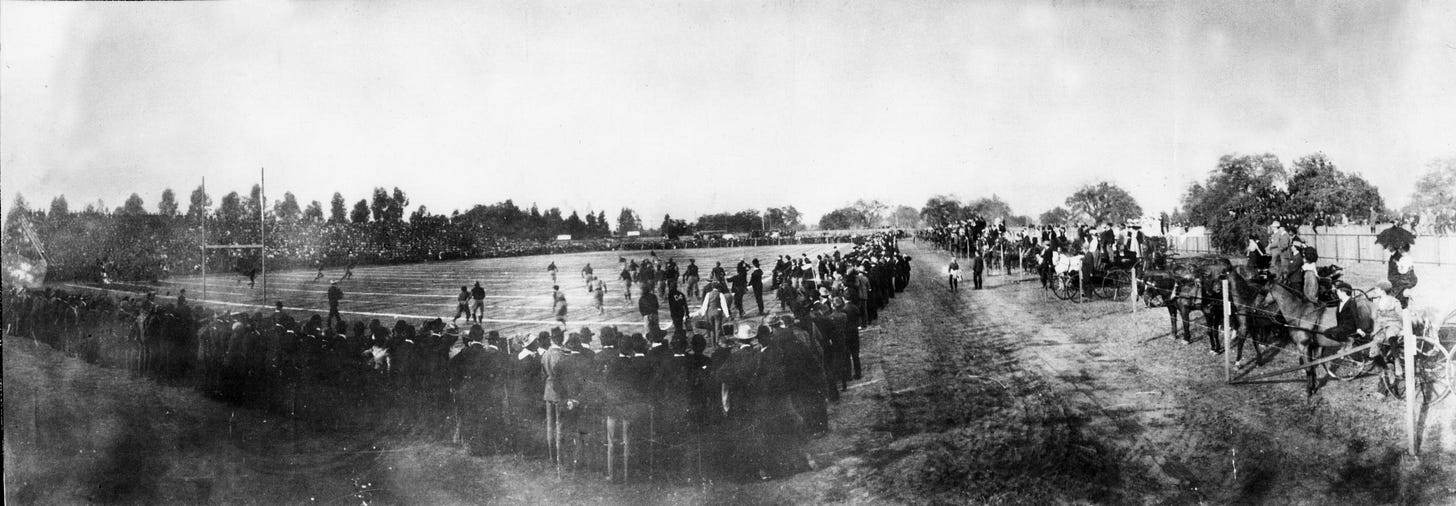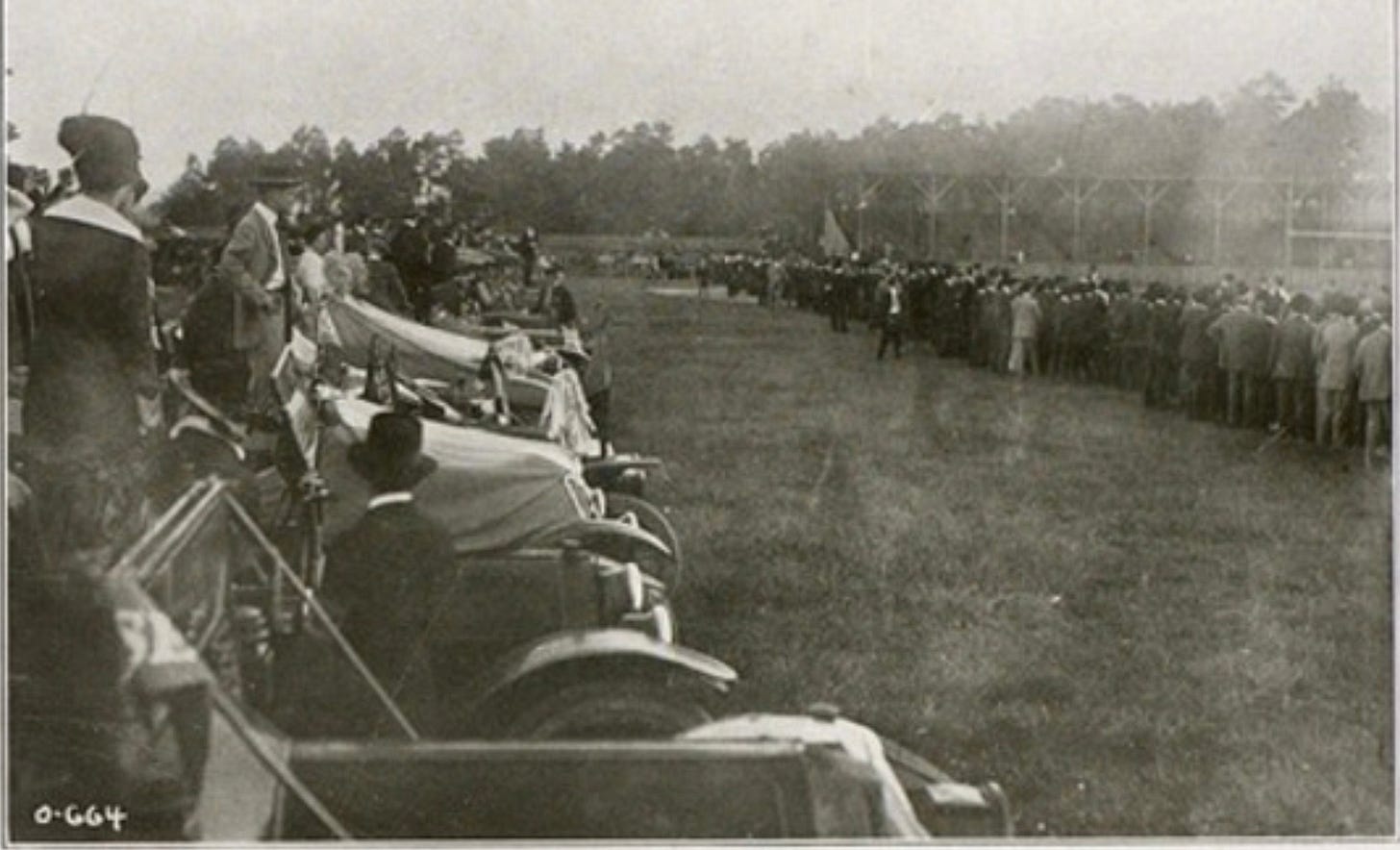Keeping Crowds Behind the Ropes
While many histories of early football have written about the large crowds attending the Yale-Princeton games played at Manhattan Field or the Polo Grounds in the 1880s and 1890s, most pre-WWI football games occurred before sparse crowds in facilities with little or no permanent seating. For every Harvard Stadium, Yale Field, Michigan’s Ferry Field, or Chicago’s Marshall Field seating twenty thousand or more, another hundred college fields lacked sufficient seating, so most attendees watched the game while standing on the sidelines. Wealthy or lucky fans watched from their horse-drawn carriages or automobiles lining parts of the field.


Many big games were played at neutral sites in locations partway between the two schools or at major and minor league baseball parks rented by the home team. Still, even major league parks in big cities were relatively small, so fans stood behind ropes in foul territory or in the outfield.

Lightly attended football games did not warrant ropes, but games with larger crowds than normal for the venue had ropes surrounding the field. Roping the field was so common it entered the rule book in 1892 related to coaching from the sideline, which was illegal in college football until the 1960s. In the event a coach or fan offered advice or otherwise coached a player on the field: “The umpire shall warn any man coaching from the side lines. Upon the second offense the offender shall be ordered behind the ropes or tents, as the case may be.”

A similar situation prevailed at small college games where the grandstands and bleachers held fewer fans than at state schools. Still, standing room crowds were common for their Thanksgiving Day rivalry games such as the Marietta-Denison game below.


The proximity of fans to the sideline led to problems in some close games, especially those with controversial calls. Fans celebrating oor angry about the game’s events sometimes interfered with play, leading to extended pauses while the police cleared the field.

An example of fans obstructing a game came late in the Purdue-Indiana game in 1901. The Boilermakers had driven to Indiana’s 12-yard line with a minute left in a 6-6 game. Purdue fumbled on the next play and the ball was picked up by an Indiana player who then ran it nearly ninety yards for a touchdown. Purdue claimed Indiana fans had come onto the field and interfered with the Boilermakers pursuing the ball carrier, but after a thirty-minute discussion, the officials awarded Indiana the touchdown. Purdue did not accept the decision and left the field without allowing Indiana to attempt the extra point. While both schools' records show Indiana winning 11-5, the day’s event did not contribute to a sense of goodwill between the schools.
In time, schools added increasingly larger on-campus stadiums purpose-built for football. Those stadiums had controlled access, offered seating for all, and physically separated the spectators from the players. While the occasional fan managed to enter the playing area and interfere with play over the years, those events are few and far between with fans now rushing the field only after big wins. Meanwhile, spectators are kept behind ropes only at PGA events since grandstands and bleachers are seldom built near the tee or fairway of the 17th hole.
Football Archaeology is reader-supported. Click here to buy one of my books or otherwise support the site.

